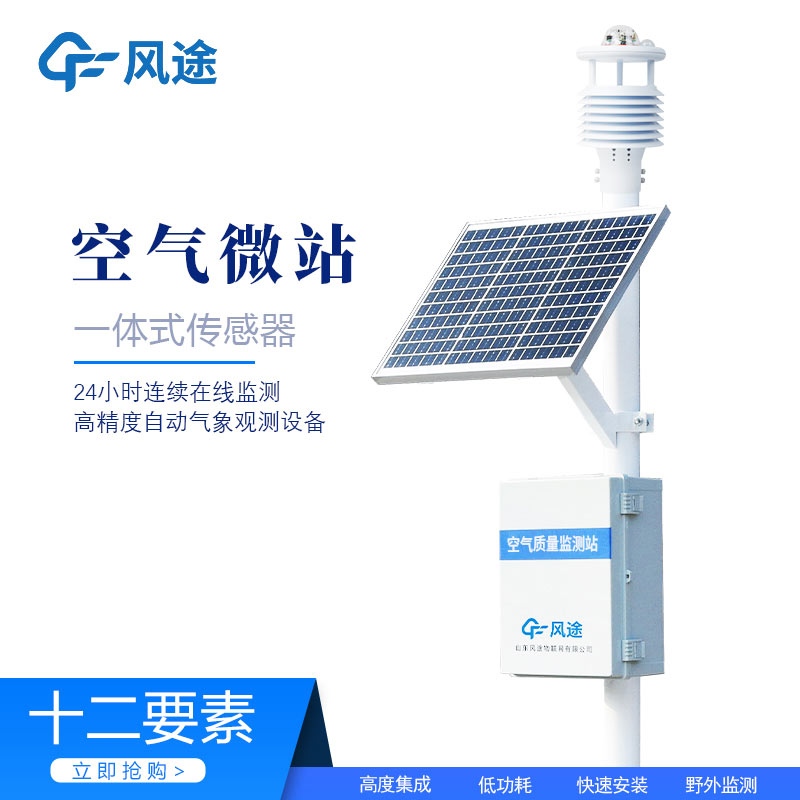Shandong Fengtu IOT Technology Co., Ltd
Sales Manager:Ms. Emily Wang
Cel,Whatsapp,Wechat:+86 15898932201
Email:info@fengtutec.com
Add:No. 155 Optoelectronic Industry Accelerator, Gaoxin District, Weifang, Shandong, China

Sales Manager:Ms. Emily Wang
Cel,Whatsapp,Wechat:+86 15898932201
Email:info@fengtutec.com
Add:No. 155 Optoelectronic Industry Accelerator, Gaoxin District, Weifang, Shandong, China
time:2025-01-03 10:16:45 source:Weather Station viewed:590 time
When the components in the air such as sulfur dioxide, nitrogen oxides, carbon monoxide, and hydrocarbon compounds exceed the standards, pollution follows. Sulfur dioxide mostly comes from the combustion of industrial fuels, and factory chimneys often emit large amounts of exhaust gases. Nitrogen oxides originate from both industrial emissions and vehicle exhausts. During the morning and evening rush hours, the incomplete combustion of vehicle engines exacerbates their production. Carbon monoxide is mainly generated during the incomplete combustion of vehicle exhausts, and hydrocarbon compounds are caused by both industrial activities and vehicle emissions. Construction work can also trigger the generation of ozone, a secondary pollutant.
These pollutants pose a serious threat to human health. They can trigger respiratory diseases, significantly increasing the risk of asthma, chronic obstructive pulmonary disease, and even lung cancer. They are also closely associated with cardiovascular diseases, leading to an increased prevalence of heart disease and stroke. Long-term exposure to a polluted environment can reduce people's immunity, and children's growth and development can also be negatively affected, with their height and intellectual development likely to be hindered.
High-concentration pollutants such as sulfur dioxide and ozone can also affect the growth of crops. They reduce the efficiency of photosynthesis, resulting in a decline in crop yield and quality. They may also cause crops to accumulate harmful substances, threatening food safety, leading to damaged leaves and poor growth and development of plants.
China takes a multi-pronged approach to prevent and control air pollution. In terms of legislation, relevant laws are continuously improved, clearly defining prevention and control principles, systems, and measures, and promoting the "Three-Year Action Plan for Defending the Blue Sky" to reduce pollutant emissions and improve air quality. In terms of industrial adjustment, high-pollution and high-energy-consuming enterprises are shut down or renovated, and green and circular economies are developed to increase the proportion of clean energy. Strict control is exerted over construction site dust. Barriers are set up, and water spraying is carried out for dust suppression. The mechanization rate of road sweeping is increased. With the help of technology, remote sensing, big data, and other technologies are used to enhance monitoring and warning capabilities, and scientific research is carried out to overcome pollution problems. In terms of public participation, the AQI index is released in real time to raise public awareness of environmental protection and encourage participation in environmental protection activities. At the regional level, a joint prevention and control mechanism is established, and coordinated emission reductions are carried out during heavy pollution periods.
Inside the Air quality monitoring station, various pollution sensors accurately detect all kinds of gaseous pollutants, particulate matter monitors keep a close eye on suspended particulate matter, meteorological monitoring equipment provides meteorological data for auxiliary analysis, and there are also chromatographic sensors and optical instruments each performing their own duties. From data collection to release, all links work closely together, strictly handling abnormal data, providing strong support for air pollution prevention and control, and safeguarding the blue sky and white clouds.

Water level meter is a product launched by Windway Technology, model FT-SW1, which can measure water level data of waters in real time, including rivers, lakes, reservoirs, dams and other areas. It uses a radar water level sensor that measures water level information in a non-contact manner using K-...
The integrated rainfall monitoring station is a new type of equipment for real-time monitoring and analysis of precipitation in the region. The equipment adopts different types of rain sensors to automatically collect rainfall data and transmit them to the monitoring center through the network. As a...
Early summer is so beautiful, the breeze, wheat waves rolling, full of hope for a good harvest. Farmers sweat hard for a good harvest, to use science and technology to guard food security oh!For example, the temperature and humidity sensor chip to help grain monitoring for many years, intelligent gr...
A large number of industrial enterprises are concentrated in industrial parks. Industrial production activities will inevitably affect the surrounding air quality. To supervise and improve air quality, it is necessary to deploy Air Quality Monitoring Stations in the parks.An Air Quality Monitoring S...